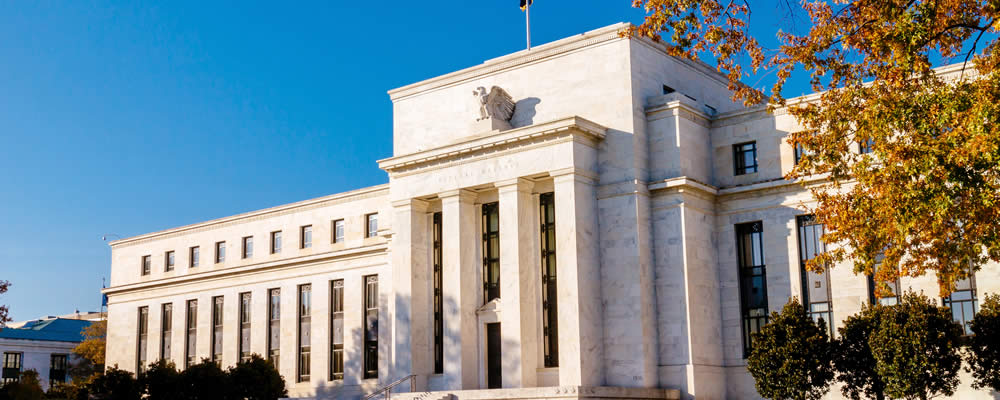Euro to US Dollar Exchange Rate Climbs on Perceived Federal Reserve Dovishness
Despite some disappointing Eurozone data and further signs of a slowing Eurozone economy, the Euro to US Dollar (EUR/USD) exchange rate edged higher over the last week as speculation of slowing US growth begins to weigh on the US Dollar (USD).
Last week, weakness in the US Dollar made it easier for EUR/USD to recover from 1.1318 to 1.1388. EUR/USD tested a three-week-high of 1.1438 on Monday morning before trending closer to the level of 1.1414 at the time of writing.
The Euro to US Dollar exchange rate was able to trend above the key level of 1.14 on Monday despite the market’s demand for safe haven currencies combined with the Euro’s (EUR) own lack of fresh support.
Overall, the US Dollar’s weakness at the beginning of the week was the most influential factor driving Euro to US Dollar exchange rate movement today. However, various factors limited the Euro’s strength.
Euro (EUR) Exchange Rate Strength Limited by Data, European Central Bank Speculation
The Euro typically benefits from weakness in its rival, the US Dollar, due to a negative correlation the currencies share. However, that has been the primary cause of the Euro’s gains as other more domestic Eurozone factors continue to weigh.
Recent Eurozone data continues to indicate that the Eurozone’s economy is slowing into the end of the year and 2019.
Most notably, last Friday’s Eurozone Gross Domestic Product (GDP) growth rate projection fell slightly short of expectations year-on-year, coming in at just 1.6%.
Due to continued signs of slowing Eurozone economic growth, economists are becoming more doubtful that the European Central Bank (ECB) will stay on track to hiking Eurozone interest rates in 2019.
According to Peter Vanden Houte, Chief Eurozone Economist at ING:
‘I would say we have strong doubts … there is a genuine chance there will be no hikes at all next year. Within the next few years the only thing I see is a normalization of getting rid of negative interest rates,’
US Dollar (USD) Sold on Federal Reserve Dovishness but Losses Limited by Safe Haven Demand
While the Federal Reserve is widely expected to hike US interest rates during its decision this month, this is already priced into the US Dollar.
US Dollar investors, instead, are looking ahead to next year’s Fed monetary policy outlook. The Fed is increasingly expressing concern about slowing global and US growth and this has translated to a more cautious tone for the recently hawkish bank.
With the Fed seemingly shifting to a more dovish stance, 2019 US interest rate hike bets have lightened and the US Dollar has been sold.
Analysts are increasingly speculating that the Fed is nearing the end of its current interest rate hike cycle.
Fed interest rate hike bets have been even weaker since Friday’s US Non-Farm Payroll report was published. The news caused some bearish analysts to speculate that the Fed may not hike rates at all in 2019.
According to Priya Misra, Head of Global Rates Strategy at TD Securities LLC:
‘They are reclaiming flexibility,
It isn’t necessarily dovish, but there is a shift in the messaging.’
However, the safe US Dollar was able to avoid further losses as persisting US-China trade tensions left investors hungry for safe haven currencies.
Euro to US Dollar (EUR/USD) Exchange Rate Could Find Stronger Support on Eurozone Data
While the Euro to US Dollar (EUR/USD) exchange rate climbed on Monday, its gains were limited by a lack of solid Euro support.
As a result, the Euro to US Dollar exchange rate could climb even higher if upcoming Eurozone data beats expectations or shows any signs that the Eurozone’s economic slowdown is moderating or rebounding.
Tuesday’s most notable dataset will be ZEW’s economic sentiment index data for Germany and the Eurozone overall. The data will give investors a better idea of Eurozone business confidence in December.
US data due on Tuesday includes US NFIB business optimism data from November and November’s PPI results, which are unlikely to be as influential compared to the day’s Eurozone data as well as continued Federal Reserve speculation.
Of course, with US-China trade tensions still flared up, the Euro to US Dollar (EUR/USD) exchange rate could also weaken if US-China trade tensions worsen further and lead to stronger market demand for safe haven currencies like the US Dollar.



